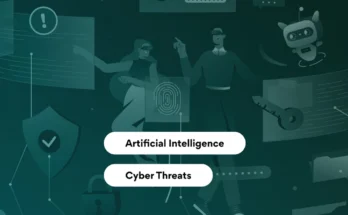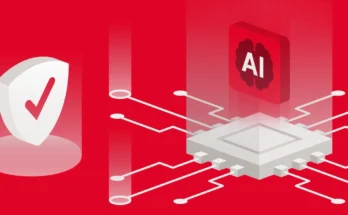How CrowdStrike AI uses behavioral analytics to prevent cyber threats.
Traditional antivirus software looks for known malware. But in today’s world Advanced cyber attacks, it is not enough. Hackers are constantly changing their methods, using new techniques that older tools may not recognize.
Therefore Crowd Strike FalconUses a leading cybersecurity platform. Behavioral analytics powered by AI To detect and block threats—even if they’ve never been seen before.
Let’s explore how CrowdStrike AI works and how behavioral analytics help protect businesses in real time.
What is Behavioral CrowdStrike AI uses behavioral analytics in Cybersecurity?
Behavioral analytics This means how users, systems, applications, and files behave over time.
Instead of asking:
“Does this file match a known virus?”
CrowdStrike AI asks:
“Is this file or process doing something suspicious or unusual?”
By tracking behaviors — such as accessing sensitive files, attempts to disable security tools, or unusual login patterns — CrowdStrike AI uses behavioral analytics can detect. New and emerging threatsincluding:
- Zero-day malware
- Fileless Attacks
- Ransomware
- Insider threats
- Advanced Persistent Threats (APTs)
How CrowdStrike AI uses behavioral analytics uses behavioral analytics
- Continuous monitoring of endpoints
CrowdStrike installs a lightweight agent on each endpoint (computer, server, laptop). This agent:
- Monitors real-time activity on the device.
- Logs each file execution, process, and network connection.
- Sends data to CrowdStrike Cloud For AI analysis
Unlike traditional antivirus, this virus doesn’t wait for a scan—it works. series.
- Tracking patterns of behavior
AI tracks normal versus abnormal behavior, such as:
| Normal behavior | Suspicious behavior |
| The user logs in from the same laptop at 9 am. | Log in at 3am from the new device. |
| Opens a Microsoft Word document. | Word introduced PowerShell (a hacking tool). |
| Writes a file to the user’s folder. | A file system writes to 32 directories. |
CrowdStrike’s AI models are trained to recognize these differences. Flag dangerous behavior Even if no known virus is found.
- Indicators of Attack Behavior (IOAs)
Invented the concept of CrowdStrike. Indicators of Attack (IOAs). While most antivirus tools look for indicators of compromise (IOCs)—which are visible. After An attack — IOA helps detect threats. during attack
Examples of IOAs:
- Abnormal code execution
- File encryption activity
- Background movement in all devices
- Disabling security services
- Suspicious script execution
It helps. Stop ongoing attacksBefore data is lost or encrypted.
- Machine Learning and AI Training
CrowdStrike’s AI is continuously trained to:
- Billions of events from customer endpoints
- Global threat intelligence
- Previous attacks and malware samples
- Behavior of threat actors (such as nation-state hackers or ransomware gangs);
Using this, it learns to detect subtle patterns that human analysts or legacy tools would miss.
- Real-time, automatic response
Once suspicious behavior is detected, CrowdStrike can:
- Automatically disconnect the device from the network.
- Terminate the malicious process.
- Quarantine affected files.
- Alert the security team.
- Provide a timeline of the entire attack sequence.
It happens in everything. SecGiving attackers almost no time to deal damage.
A real world example
Imagine a hacker sends a phishing email with a fake receipt. The user clicks the link, and a script silently runs.
If the file doesn’t have a known signature, traditional antivirus might miss it.
Crowd Strike FalconUsing behavior analytics, notice that:
- Word launching PowerShell (abnormal)
- A hidden script is changing system settings.
- The script is trying to connect to an unknown IP address.
Immediately, Falcon stops the process, isolates the endpoint, and alerts your security team—with a full report of what happened.
Benefits of Behavioral Analytics in CrowdStrike AI
| benefit | effect |
| Detects unknown threats. | Blocks malware even if it’s brand new. |
| Prevents fileless attacks. | Prevents malicious behavior without requiring a file. |
| Immediate incident response | Stops threats in seconds, not hours. |
| Reduces false positives. | Understands normal activity to avoid unnecessary alerts. |
| Improvement comes over time. | Learns from millions of devices globally. |
Final thoughts for CrowdStrike AI uses behavioral analytics
CrowdStrike’s AI-powered behavioral analytics a A revolutionary step beyond traditional antivirus. It doesn’t just scan for known threats. Understands how attacks behave. and reacts before damage occurs.
In a world where cyber threats are smarter, faster, and harder to detect, Behavioral analytics gives your business a powerful advantage..
FAQ’s
1. How is CrowdStrike AI different from traditional antivirus software?
Traditional antivirus relies on known malware signatures, making it ineffective against new or emerging threats. CrowdStrike Falcon uses AI-powered behavioral analytics to detect suspicious activity—even if the threat has never been seen before—by analyzing behaviors such as unusual file access, security tool tampering, or unusual login patterns.
2. What is Behavioral Analysis in Cybersecurity?
Behavioral analytics shows how users, systems and applications behave over time. instead of asking, “Is this file a known virus?”CrowdStrike asks, “Is this action suspicious?” It helps to detect:
- Zero-day malware
- Fileless Attacks
- Ransomware
- Insider threats
- Advanced Persistent Threats (APTs)
3. How does CrowdStrike monitor endpoints for threats?
CrowdStrike installs a lightweight agent on each device (laptops, servers, etc.) that:
- Continuously monitors real-time activity.
- Logs file execution, processes, and network connections
- AI sends data to CrowdStrike’s cloud for analysis.
Unlike traditional antivirus, this happens in real time, not just during scheduled scans.
4. What are indicators of attack (IOAs), and why are they important?
Traditional tools look for indicators of compromise (IOCs) – signs of an attack After It happens that CrowdStrike’s IOAs detect malicious behavior. during Attack, such as:
- Abnormal code execution
- File encryption (ransomware behavior)
- Background movement in all devices
- Disabling security services
This allows attacks to be stopped before data is stolen or encrypted.
5. How does AI learn to detect new threats?
CrowdStrike’s AI is trained to:
- Billions of endpoint events from global users
- Threats to intelligence from past attacks
- Hacker behavior patterns (eg, ransomware gangs, nation-state actors);
This helps it identify subtle, suspicious activity that legacy tools or humans might miss.
6. What happens when CrowdStrike detects a threat?
AI can automatically:
- Isolate the affected device.
- Terminate the malicious process.
- Quarantine affected files.
- Alert security teams with a complete timeline of the attack.
Responses occur in seconds, minimizing damage.
7. Can CrowdStrike stop fileless attacks?
Yes! Because behavioral analytics tracks actions (not just files), it can detect:
- Bad scripts running in memory.
- Misuse of PowerShell
- Doubtful system change
This makes it highly effective against fileless attacks, which traditional AV often misses.
8. Do behavioral analytics reduce false positives?
Yes By learning typical user and system behavior, CrowdStrike’s AI avoids unnecessary alerts while accurately flagging real threats.
9. Can CrowdStrike protect against insider threats?
Absolutely. By monitoring unusual user activities (eg, mass data downloads, unauthorized access), it detects malicious or careless insiders.
10. How does CrowdStrike improve over time?
AI continuously learns from:
- New attack patterns around the world.
- Customer Endpoint Data (Anonymized)
- Developing a hacker strategy
This means that protection gets better and stronger over time.
11. Is CrowdStrike’s AI better than human analysts?
AI augments human analysts by:
- Millions of events are being processed per second.
- Detecting threats faster than manual reviews
- Providing detailed attack timelines for investigation
Security teams can then focus on critical decisions, rather than sifting through alerts.
12. How does CrowdStrike handle zero-day exploits?
Because it doesn’t rely on known malware signatures, CrowdStrike detects zero-day attacks:
- Analyzing exploit behavior (eg, abnormal memory accesses)
- Blocking suspicious process chains
- Using cloud-powered AI for real-time updates
13. Can CrowdStrike replace my existing antivirus?
Yes CrowdStrike Falcon is designed as a next-generation replacement for Legacy AV, offering:
- Better detection of advanced threats
- Low performance effect (lightweight agent)
- Real-time protection (not just periodic scans)
14. Which industries benefit the most from CrowdStrike’s AI?
Any sector exposed to cyber threats, including:
- Finance (banks, insurers)
- Healthcare (hospital, pharma)
- Government and Defence
- Retail and e-commerce
- Critical infrastructure
15. How quickly can CrowdStrike stop a ransomware attack?
In many cases, in seconds, by:
- Detecting file encryption behavior
- Blocking lateral movement
- Isolate affected devices




